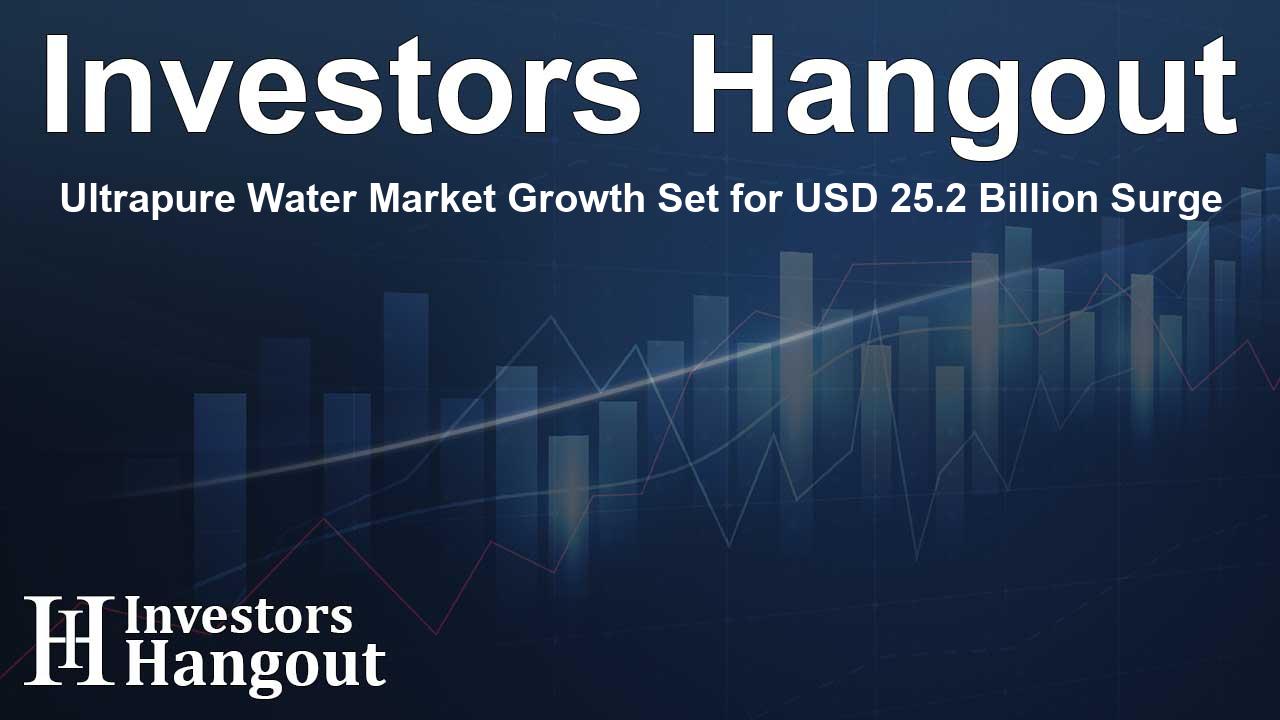Ultrapure Water Market Growth Set for USD 25.2 Billion Surge

Overview of the Ultrapure Water Market
The global ultrapure water market is on a promising growth trajectory! As industries evolve, the demand for ultrapure water has surged significantly. By 2033, this market is set to reach an impressive USD 25.2 billion, expanding from USD 8.8 billion in 2023. With a compound annual growth rate (CAGR) of 11.1%, it is becoming increasingly essential in sectors such as semiconductors, pharmaceuticals, and power generation, all of which emphasize the utmost purity in water used in production.
Understanding the Need for Ultrapure Water
Significance in Key Industries
Industries such as semiconductors and pharmaceuticals rely heavily on ultrapure water due to their stringent quality requirements. Any impurities can lead to defects in manufacturing processes, greatly affecting product integrity. This escalating need is directly correlating with advancements in technology and the consequent enhancement of quality control measures across these sectors.
Regional Insights
The Asia-Pacific region stands as the largest consumer of ultrapure water, fueled by robust investments in manufacturing capabilities. North America and Europe follow closely, showcasing increasing investments in high-tech sectors that further drive this demand. As more manufacturing facilities invest in advanced water treatment technologies, this upward trend is expected to continue.
Market Drivers and Opportunities
Several primary factors are propelling the growth of the ultrapure water market. The rising demand in semiconductor manufacturing, combined with significant investments into the pharmaceutical sector, is vital. As global environmental regulations become more stringent, industries are compelled to adapt, paving the way for innovative solutions in ultrapure water production.
Technological Advancements
Emerging technologies in biotechnology and nanotechnology are also opening new avenues for ultrapure water applications. The continuous focus on sustainability is fostering environmental compliance, encouraging companies to develop systems that not only meet purity standards but also promote eco-friendly practices.
Components of the Ultrapure Water Market
The ultrapure water market is comprised of several critical components, including filtration systems, pre-treatment equipment like reverse osmosis, and post-treatment systems. Filtration systems dominate the market as they play a crucial role in purging even the minutest contaminants from the water, ensuring top-quality ultrapure water for various applications.
Key Market Trends
The semiconductor industry remains a vital growth driver. The continuous need for uncontaminated water during fabrication processes reinforces this demand. Furthermore, the incorporation of ultrapure water into the biotechnology and nanotechnology sectors signifies a clear trend towards its increased adoption across diverse industries.
Competitive Landscape
The ultrapure water market showcases a dynamic and competitive environment, with numerous manufacturers striving to fulfill the high-quality demands of their respective industries. Market leaders are investing significantly to advance their water treatment technologies, focusing on enhancing the overall efficiency and sustainability of their offerings.
Recent Developments
Innovative products such as LabPure launched by Envirogen Group in early 2023 underline the market's progression. This energy-efficient water purification system has been designed specifically for laboratories demanding ultrapure water, thereby affirming the commitment to providing tailored solutions for evolving industry needs.
Future Projections
The ultrapure water market is expected to expand further, driven by ongoing innovation and growth in demand from high-technology manufacturing and pharmaceutical sectors. Companies that innovate consistently will be best positioned to meet the upcoming needs across various industries while ensuring environmental and quality standards are upheld.
Frequently Asked Questions
What is the projected growth of the ultrapure water market?
The ultrapure water market is expected to grow from USD 8.8 billion in 2023 to USD 25.2 billion by 2033, representing a CAGR of 11.1%.
Which industries primarily drive the demand for ultrapure water?
The semiconductor and pharmaceutical industries are the largest consumers of ultrapure water, given their strict quality requirements.
Where is the largest market for ultrapure water located?
The Asia-Pacific region represents the largest market for ultrapure water, followed by North America and Europe.
What factors are influencing the growth of this market?
Growing environmental regulations, increased demand in semiconductor production, and advancements in technology are key factors influencing the market's growth.
What are some recent innovations in ultrapure water technology?
Innovations like energy-efficient centralized water purification systems are setting new benchmarks in the industry, making processes more sustainable while meeting stringent quality standards.
About Investors Hangout
Investors Hangout is a leading online stock forum for financial discussion and learning, offering a wide range of free tools and resources. It draws in traders of all levels, who exchange market knowledge, investigate trading tactics, and keep an eye on industry developments in real time. Featuring financial articles, stock message boards, quotes, charts, company profiles, and live news updates. Through cooperative learning and a wealth of informational resources, it helps users from novices creating their first portfolios to experts honing their techniques. Join Investors Hangout today: https://investorshangout.com/
Disclaimer: The content of this article is solely for general informational purposes only; it does not represent legal, financial, or investment advice. Investors Hangout does not offer financial advice; the author is not a licensed financial advisor. Consult a qualified advisor before making any financial or investment decisions based on this article. The author's interpretation of publicly available data shapes the opinions presented here; as a result, they should not be taken as advice to purchase, sell, or hold any securities mentioned or any other investments. The author does not guarantee the accuracy, completeness, or timeliness of any material, providing it "as is." Information and market conditions may change; past performance is not indicative of future outcomes. If any of the material offered here is inaccurate, please contact us for corrections.